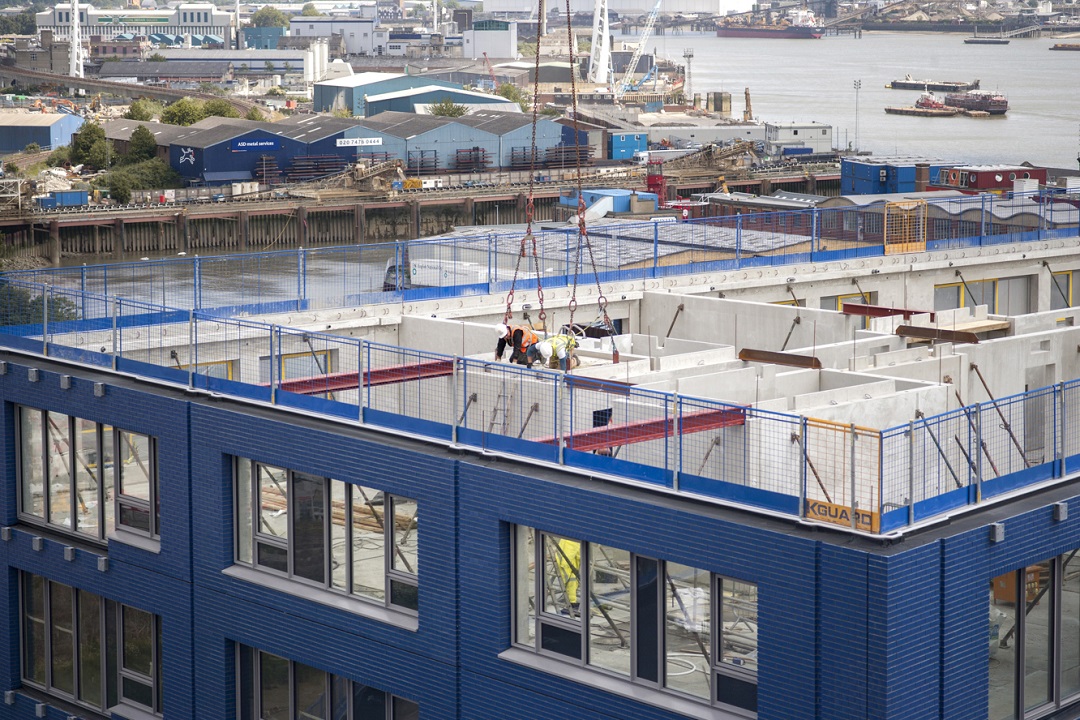
NHBC's MMC roundtable
Five key points from NHBC’s recent MMC roundtable

NHBC hosted a recent Roundtable with a number of leading industry specialists, which is featured in the latest issue of Offsite magazine.
NHBC’s Innovation Manager Richard Lankshear and Senior Business Development Manager Graham Sibley joined in the discussion, which highlighted the success of NHBC Accepts, the NHBC Foundation’s recent ‘Modern Methods of Construction: Building on Experience’ report along with looking at the key issues facing the sector.
In a wide-ranging Roundtable, the article states: “While the owner of a home may not necessarily need or want to know about its offsite manufacture, when it comes to the thorny issues surrounding warranties, accreditation, valuation and how long an ‘asset’ will last, there is a struggle to embed understanding in what the various offsite technologies offer. The offsite sector is constantly having to prove what it can do – often above and beyond the parameters set for traditional masonry construction.”
Read on to discover five of the key topics of discussion:
1. “Historically the failures and shortcomings of offsite are often what attracts attention”
Author and founder of Studio Partington, Richard Partington, explained: “There is an element of experimentation that often falters when it diverges too much from the basic principles of understanding construction. Sometimes the learning doesn’t continue very well across generations.”
Over the years, different sectors have found their own route to technological solutions for what they are trying to achieve. There has become a realisation that a home isn’t just a ‘flatpack of superstructure and windows but is a whole system that has to work together. Certainly, rapidly changing environmental standards and a generational housing shortage has focused minds at every level of the built environment on how to improve the delivery of new homes.”
2. The UK’s ‘chequered history’ regarding prefabrication.
The article argues that “the curious mistrust and lack of uptake” is not replicated in the same way elsewhere. For example, the Nordic countries have long seen offsite methods as an efficient and environmentally friendly way to build. Swedish provider BoKlok are now here in the UK ‘transposing and transplanting’ technology that is already mature overseas and presenting it to the UK market in a different way.”
“When I talk to my Swedish colleagues,” says Graeme Culliton, BoKlok Managing Director and Country Manager. “They struggle to understand why we have this cultural hang-up about MMC. They don’t have that. Also, we don’t talk to the customer about modular in detail – it’s just not an issue really.”
3. “Not judged against traditional methods of construction”
“One of the biggest challenges we have had is gaining accreditation, as the bar is high,” says Nigel Banks, Special Projects Director at Ilke Homes. “But having gone through that process [of NHBC Accepts] we have a much better product as a result, I think the bar is at the right level.” The deeply embedded and possibly invested interests of ‘traditional methods’ has created a cloud surrounding risk and an uncomfortableness that exists about some offsite systems.
“We are not judged against traditional methods of construction,” says Oliver Novakovic, Technical and Innovation Director, Barratt Developments who has championed offsite for many years at the highest level. “We are judged much higher than that.”
4. How do we regulate when the bar is so high?
If there is a significant offsite technology failure, the knock-on effect across the industry and supply chain means that everyone runs the risk of being damaged by the same issue – so how do we regulate where the quality bar is set? Industry benchmarks are part of the role of NHBC in setting where and how high this level is.
As Richard Lankshear, Innovation Manager at NHBC says about these higher bars of attainment. “There is good reason for it. When it comes to innovation in construction, not the innovation is in the process, not the product. We know the materials and how they work, we know what can go wrong with them, so the design of most offsite systems can be assessed against conventional design. The innovation is in where and how they are assembled – that is where the risk lies. Also, a system can be produced to very high quality in a factory, but there is the potential for a systemic problem to be built in, so a defect could then be rolled out across multiple homes. That is a particular risk that we think needs to be looked at in more detail.”
5. Finally, “Confidence is everything”
The post-pandemic world wants reassurances more than ever that offsite methods deliver housing quality but provide an investible asset. The whole gamut of financial institutions need to be educated more about where the strengths and benefit of offsite methods rest. The question is how best to isolate ways on how to present offsite’s case for investment, quantify risk and convince them of quality and performance surety.
It’s also all about the house itself – lower heating bills, quality workmanship and sustainable, flexible homes, a great living environment – is something the average resident is concerned about more than how the home was built. Driven by the zero carbon agenda, the market for energy efficient homes delivered through a speedy, streamlined manufacturing process would suggest there has never been a better time to adopt offsite methods.
“NHBC has a responsibility to support innovative construction,” says Graham Sibley. “But in a public and transparent way – as we have done with NHBC Accepts – to help lenders and investors to have the confidence to use offsite. We are committed to do that in the future.”
Read the latest issue of the Offsite Magazine online here.

